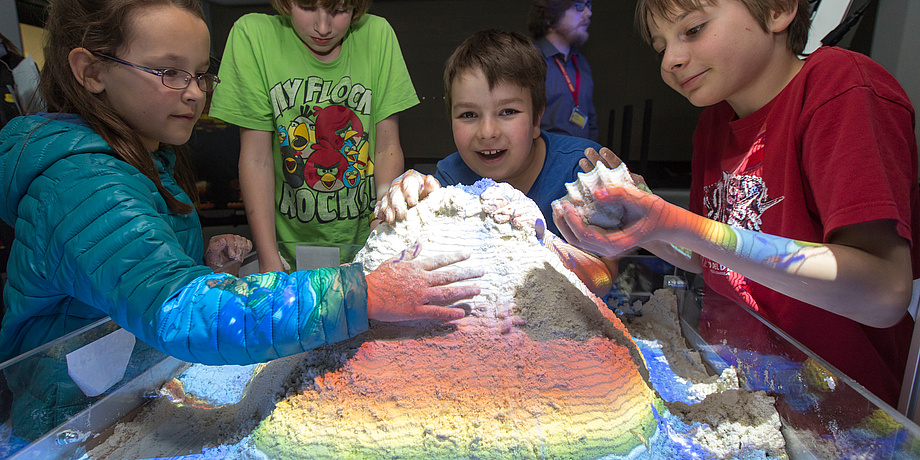The Science behind Sticky Sand
In our previous research project “Comprehensive Investigation of wet Powder Blending” we investigated the “birth” of so-called liquid bridges forming between particles: a tiny amount of liquid filling the gap the sand particles form (i.e., a liquid bridge), in which case liquid is sprayed on the surface of a particle bed. The reason is, that due to surface tension the pressure inside the bridge is lower than that in the liquid present on the surface of the sand particles. Thus, liquid bridges soak up the liquid in a bed of particles - except that, which is trapped in the roughness on the particles’ surface. Most important, it is exactly the roughness of the sand particles that determines the recipe (i.e., the right amount of liquid) of the perfect sandcastle: liquid trapped in the particles’ roughness has, in simple words, no strength, while that in liquid bridges has (this was the main finding of Halsey and Levine, which made their work stand out).A key question remains: How can we let other people know about this?
In this case, we have filled up the asperities on the particles’ surface with water and we formed liquid bridges that can sustain a certain mechanical stress. While we finally succeeded to describe such a “birth” of a liquid bridge, and may now also describe the effect of the roughness on a sandcastle’s strength, a key question remains: How can we let other people know about this? Most important: how can we transparently communicate the complexity inherent to “sticky sand”, such that future researchers will push science beyond our current understanding?The Virtual Sandbox
In the “Virtual Sandbox” project we collaborate with the University College of Teacher Education (Pädagogische Hochschule Steiermark) to explain the field of particle engineering (in which “sticky sand” plays a central role) to primary and secondary pupils, as well as students at the TU Graz. One goal is, that pupils can perform experiments on their own, realizing the peculiar behavior of particles at rest and/or in flow. The central product of the Virtual Sandbox project is, needless to say, a virtual sandbox: with a Kinect camera, a projector, a simulation computer and smart software available in the web, we can measure the 3D surface profile of the sand. With this information, one can compute height contours, or perform some simple simulations, e.g., the flow of water on the sand surface. All this can be projected back onto the sand surface, allowing users of the sandbox to interact with the calculations.With the help of our fancy computer models, we can indeed describe how water would be transported through the particle bed, without actually doing it!
This is nothing new. What we added to the sandbox is the simulation of the transport of water in the particle bed: with the help of our fancy computer models, we can indeed describe how water would be transported through the particle bed, without actually doing it! This seems awkward, since we could simply sprinkle water on the real-world sand, but scientifically this is a “bingo”: testing a hypothesis on the computer is a key instrument to advance our understanding of how things work, and often greatly speeds up work (experiments with sand is difficult, because it is opaque, i.e., cannot see-through). Most important, we could predict the future (i.e., what happens if we now would add a certain amount of water?), same as in the daily weather forecast on television. But what is it that we would like to predict with our humble sandbox?